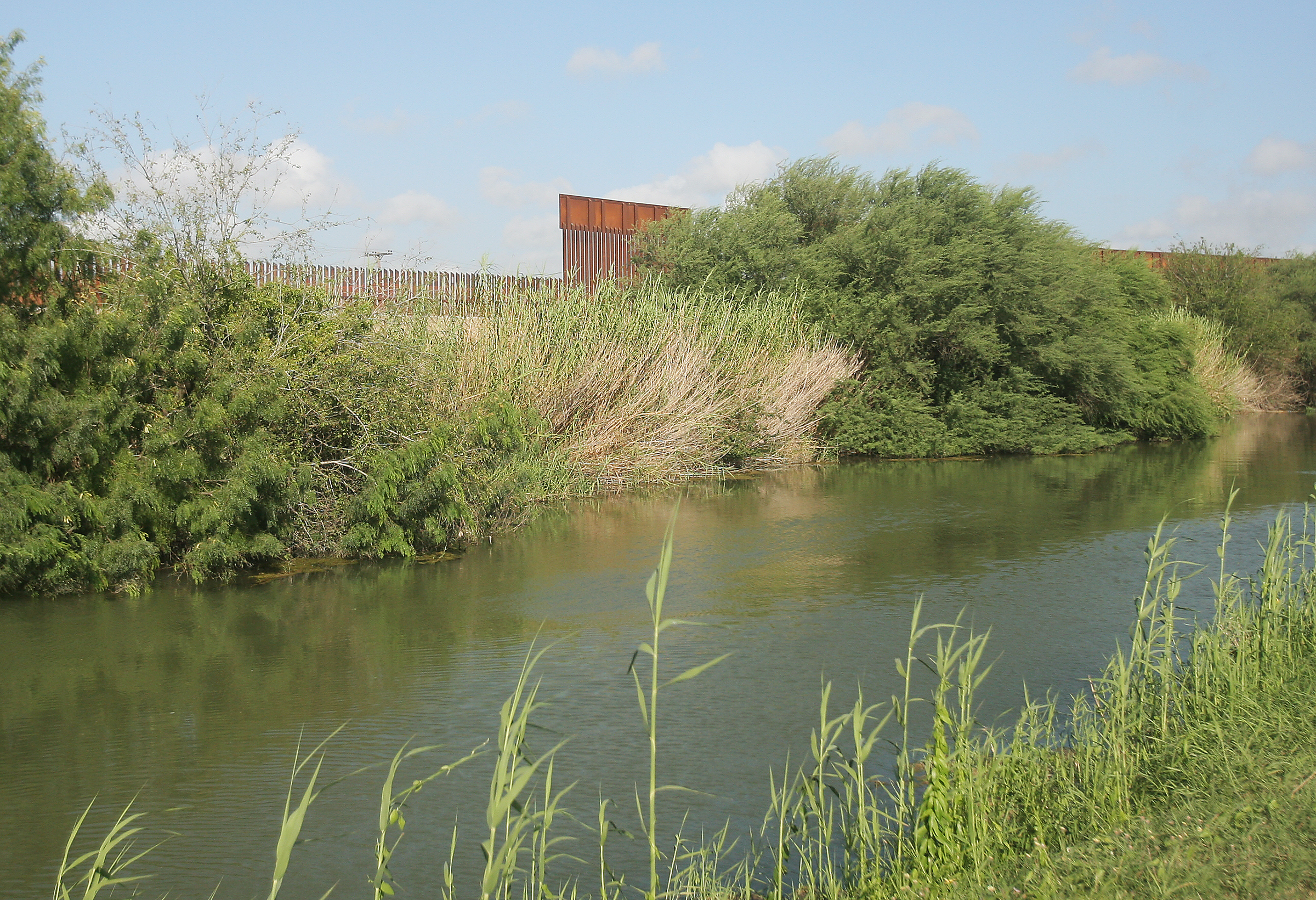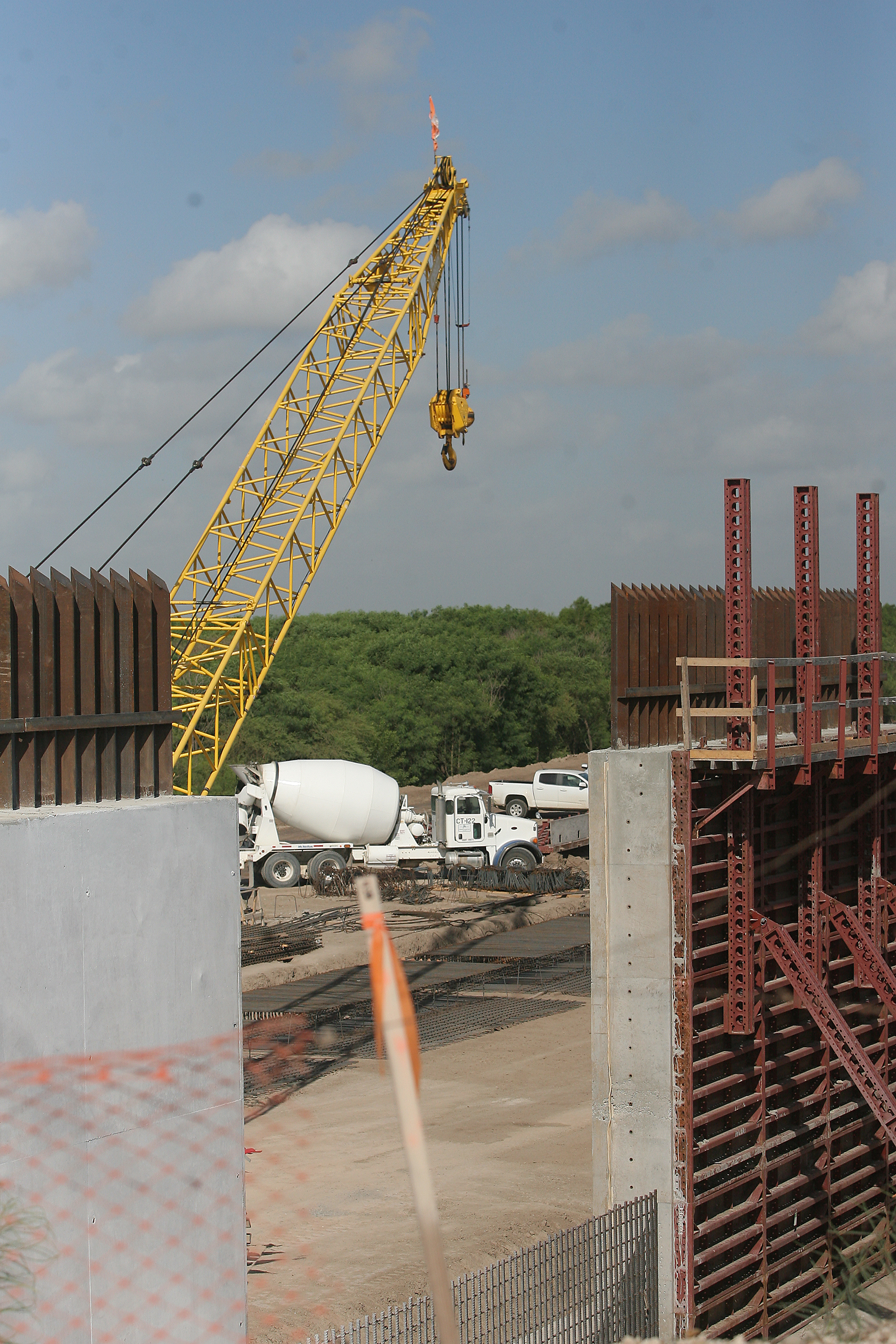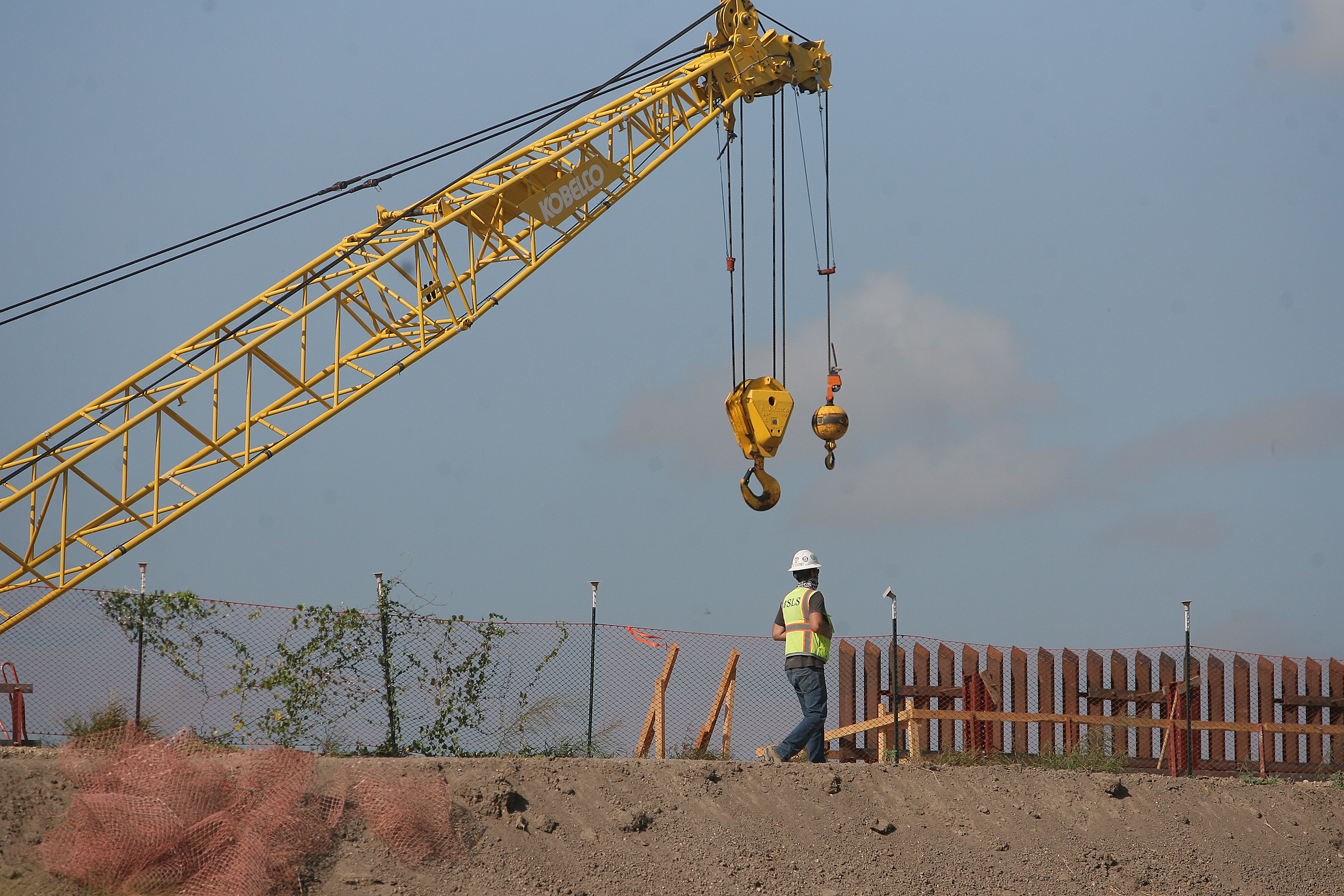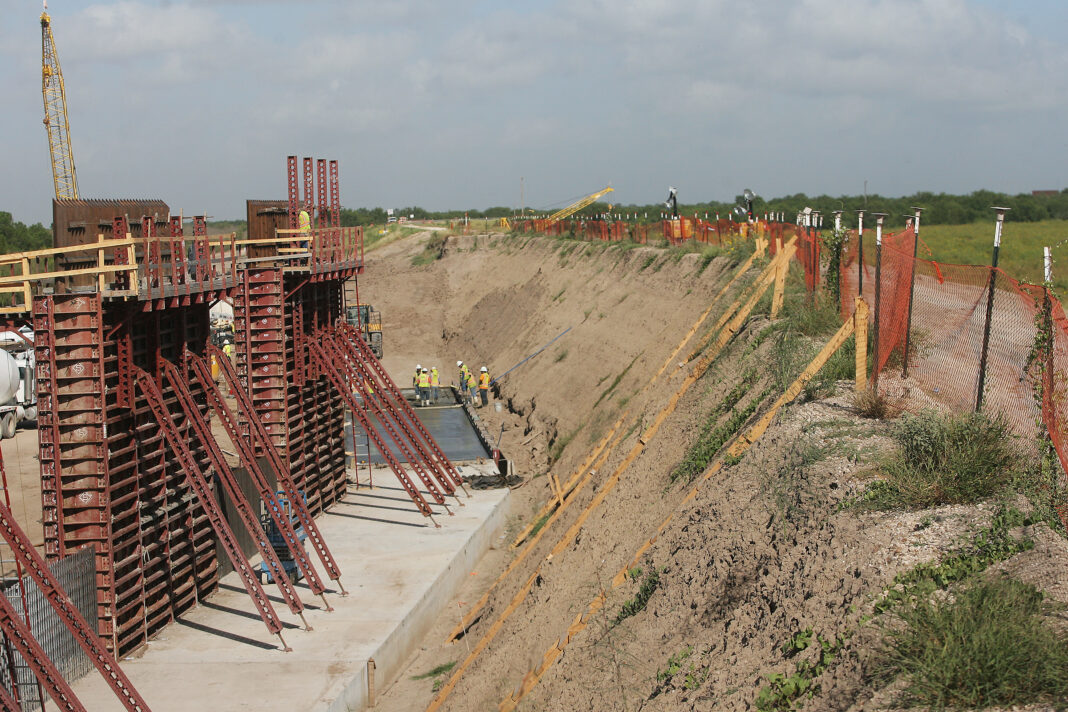MISSION — Seven months into President Joe Biden’s administration, both government officials and local activists have grown frustrated over the lack of direction coming from the White House regarding border security.
Despite the president’s campaign promises to put a halt to border wall construction, over a hundred land condemnation lawsuits remain pending in federal court — lawsuits initiated under Biden’s predecessor, Donald Trump.
For months, attorneys with the Department of Justice have been unable to say what the future of those cases may be.
Meanwhile, though the president issued a 60-day moratorium on wall construction on his first day in office, the White House has issued little to no additional guidance since. Local environmentalists, however, have discovered that border wall construction has resumed in the Rio Grande Valley under the guise of flood control levee repair.
And no matter where you look — from federal judges and attorneys, to landowners, to anti-wall activists — there are few answers to be found.
TO TAKE OR NOT TO TAKE
Perhaps the biggest questions come from federal court, where neither government attorneys nor those representing landowners seem to have any idea what will happen to the more than 100 land condemnation suits that are currently pending.
The bulk of the cases were initiated in the final days of the Trump administration, however the Department of Justice continues to post notice of lawsuits in local newspapers, including The Monitor.
Decisions in the litigation have been mixed. In one case, with the Cavazos family, a federal judge granted possession of their family land to the federal government in April.
But more recently, the government has abandoned its attempts to take the land of a Starr County landowner when, on Tuesday, it asked the court to dismiss the lawsuit and close another related case.

For attorneys with the Texas Civil Rights Project — a nonprofit legal group that represents many landowners who are facing litigation — there seems to be “no rhyme or reason” for how the decisions are being made, and therein lies their largest frustration.
“What begs the question for me is if that can happen in that case with apparently no rhyme or reason, there is no policy reason for why that can’t happen for the hundred others, why that can’t happen for the Cavazos family, for Pamela Rivas headed toward trial, for all our other clients that are going through this right now not knowing what is going to happen next?” said TCRP attorney Ricky Garza during a media call on Thursday.
Garza was speaking about a decision that was handed down by U.S. District Judge Randy Crane last Friday, granting the government’s motion to dismiss a condemnation case against three parcels of land in Starr County.
As first reported by The Progress Times, the land will be revested, or its ownership returned, to the original landowner.
But when asked by Crane if the case was an indication of a policy shift that would affect other land condemnation cases, the government attorney said no.
On Tuesday, another Starr County landowner saw a similar fluke decision end her litigation worries.
It was then that Nayda Alvarez, whose family owns two riverside tracts of land totaling around 11 acres, learned the government was dropping its lawsuit against her family’s land, as well.
“When I heard that, I’m like, okay, thank God, this is going to be over with,” Alvarez said Saturday.
But the longtime educator, who says her family has owned the land for five or six generations, and who now enjoys watching her grandkids play there, says she fears the relief may be temporary.
“But then, in the back of my mind, I’m like, okay, we’ve got another idiot in town, and that’s Abbott. So what’s gonna happen now?” she said, referring to an announcement by Texas Gov. Greg Abbott to continue building border wall at the state level.
Garza, the TCRP attorney, said that other than those two cases, he has not seen any change in the government’s position, despite assurances from Biden during his campaign that he would put an end to taking away people’s land for border wall construction.
“With the right of entry cases it was amazing and great and exciting to see the Alvarez family a little bit more protected than they were last week, to see these cases dismissed, but, as far as we know, this was not a policy shift from the Biden folks,” Garza said.
CONSTRUCTION CONTINUES

It’s not just in court where confusion is running rampant.
At several sites where border wall construction was slated to occur — but where none had actually begun prior to Jan. 20 when Biden was sworn into office — large machinery can be seen moving along levees pouring concrete and erecting rusty steel bollards.
Though the president’s moratorium on construction was set to expire after only 60 days, the administration never issued follow-up instructions on what would happen at the sites.
This spring, however, as several construction sites lay abandoned with large swaths of flood control levee left torn open, local officials began to sound alarms about the flood dangers those open levees posed.
After nearly a month of outcries, the Department of Homeland Security announced it would repair the levees for the safety of the surrounding communities. The repairs were completed within weeks.
In July, however, equipment could be seen at new sites, at places where the levees were intact.
Crews could be seen digging deep into the levees, putting up wooden support structures as they poured concrete into the holes, and then topping the new expanses of cement with 6-foot tall bollards.
For environmentalist Scott Nicol, it was an end-run around the president’s promise of “not another foot” of border wall.
“What is happening right now is not levee repair,” Nicol said Saturday.
“Right now levees are being torn open to convert them into border walls in the middle of hurricane season,” he said.
When reached for comment earlier this week, a spokesperson for DHS referred questions regarding the new construction to a media inquiry email address. A list of questions sent to that address was not returned as of press time Saturday.
However, a memo issued by DHS on June 9 appears to shed more light on the construction currently occurring on federally owned land in Mission, just a stone’s throw from the Bentsen Rio Grande Valley State Park.
The memo, titled “Border Wall Plan Pursuant to Presidential Proclamation 10142” lays out a narrow set of exceptions to the construction moratorium, including projects that are deemed “urgent measures needed to avert immediate physical dangers.”
“DHS has re-initiated activity on two projects to protect life and safety under the Secretary’s exception. The first is a project in the Rio Grande Valley of Texas, where DHS will construct and/or remediate approximately 13.4 miles of compromised levee,” the memo reads, in part.

The memo also makes clear that the government will continue to waive the review of environmental impacts associated with the projects under the authority of Illegal Immigration Reform and Immigrant Responsibility Act.
That part of the memo is what makes Nicol certain the current construction has nothing to do with repairing levees, but is rather about continuing the construction of the border wall.
“That’s a clear indication that these are not levees, these are border walls. If it was a levee repair, they’d have to do environmental compliance,” Nicol said.
TCRP attorneys agree that the government may be using concerns over the safety of the Valley’s levee systems to get around the construction pause, especially as the government continues to pay contractors whose contracts were secured prior to the presidential changeover.
“What happened since then, though, I think was really this exception following the rule, this mission creep where, you know, the holes were fixed, but then we saw more reports trickling in of construction,” Garza said.
For Nicol, that construction has resumed after the president’s numerous campaign promises to address such border issues is disappointing.
“I think that it’s well past time for the administration to take a hard look at the border and border communities and the border enforcement policies that they inherited from the Trump administration and set a new course,” Nicol said.
“That means actually living up to not another foot,” he said.
Garza was more pointed in his criticism.
“I think it’s a betrayal of the people who helped put him into the White House in the first place. It is really thinking that we are somehow too stupid to notice the construction happening in our own backyards when we see it every day,” he said of Biden’s months-long silence on both the lawsuits and border wall construction.
Nayda Alvarez continues to enjoy her land, which is safe for now.
She vehemently disagrees with the border wall, saying it doesn’t work. And she was especially angered during a moment when she felt particularly powerless against the government early on in the lawsuit.
“At the very first court that we had, the judge said ‘I don’t see any value in this property’,” she said.
“They say there’s no value in the 5 acres? Watch this, my house is there, my dad’s house is there, the neighbor’s house is there. There’s a church in the 5 acres, and the parish hall is there and you say that there’s no value in this property? That’s not right,” she said.
People told her the decision would be inevitable, that the government would take the land she fishes and hunts on. But with Tuesday’s decision, Alvarez spoke with a note of triumph, a David having won against a Goliath.
“Te aguitas when you know people are talking about you, they’re laughing at you, and that they tell you you don’t have a chance. Well, b- – – -, guess what? I beat him (Trump) because he didn’t take it away,” she said.





